Composite image of the Abell 2597 galaxy cluster showing the fountain-like flow of gas powered by the supermassive black hole in the central galaxy. The yellow is ALMA data of the cold gas. The red is data from the Very Large Telescope showing the hot hydrogen gas in the same region. The extend purple is the extended hot, ionized gas as imaged by the Chandra X-ray Observatory.
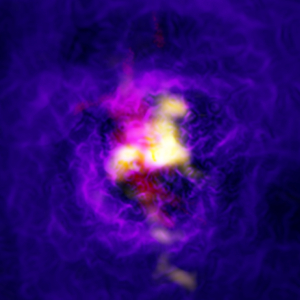

Europa’s First Global Thermal Map
Series of 4 images of the surface of Europa taken with ALMA, enabling astronomers to create the first global thermal map of Jupiter’s icy moon.
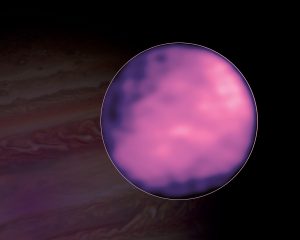
ALMA Observation of Europa
ALMA image of Jupiter’s moon Europa. ALMA was able to map out thermal variations on its surface. Hubble image of Jupiter in the background.
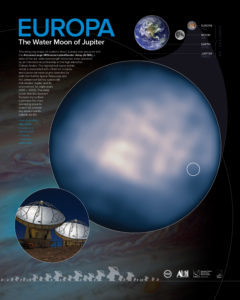
Europa, The Water Moon of Jupiter Poster
Downloadable poster of an ALMA observation of Europa. This intriguing image of Jupiter’s moon, Europa, was acquired with the Atacama Large Millimeter/submillimeter Array (ALMA), a state-of-the-art, radio-wavelength telescope array operated by an international partnership in the high elevation Chilean Andes. The highlighted region (white circle) is associated with a thermal anomaly and a potential water plume detected by both the Hubble Space Telescope and the unmanned Galileo spacecraft that studied Jupiter and its environment for eight years (1995-2003). The deep ocean that lies beneath Europa’s icy surface is perhaps the most promising place to search for present-day environments suitable for life.
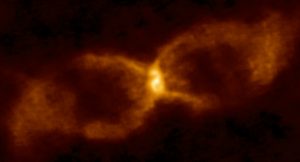
Dwarf Stars Collide
Using ALMA, an international team of astronomers found evidence that a white dwarf (the elderly remains of a Sun-like star) and a brown dwarf (a failed star without the mass to sustain nuclear fusion) collided in a short-lived blaze of glory that was witnessed on Earth in 1670 as Nova sub Capite Cygni (a New Star below the Head of the Swan), which is now known as CK Vulpeculae.
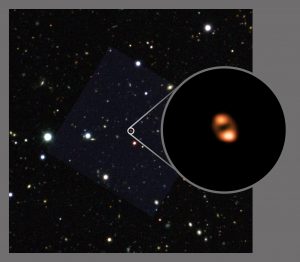
ALMA Observes Most Distant Galactic Outflow
ALMA, aided by a gravitational lens, imaged the outflow, or “wind,” from a galaxy seen when the universe was only one billion years old. The ALMA image (circle call out) shows the location of hydroxyl (OH) molecules. These molecules trace the location of star-forming gas as it is fleeing the galaxy, driven by either supernovas or a black-hole powered “wind.” The background star field (Blanco Telescope Dark Energy Survey) shows the location of the galaxy. The circular, double-lobe shape of the distant galaxy is due to the distortion caused by the cosmic magnifying effect of an intervening galaxy.





